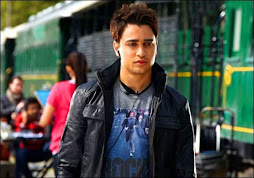 Photo: R.Shivaji Rao Guru Adyar Lakshmanan with (from left) Roja Kannan, Bragha Bessell and Jayanthi Subhramaniam
Photo: R.Shivaji Rao Guru Adyar Lakshmanan with (from left) Roja Kannan, Bragha Bessell and Jayanthi Subhramaniam
Bharatanatyam maestro Adyar K. Lakshman, famed for his electric skills in nattuvangam as well as his dynamic vision of music and dance, turns 75 today. He can look back on a long list of achievements and awards, notably the Padma Sri and the Sangeet Natak Akademi award. The network of his students stretches all over the world. To celebrate his birthday, senior students Jayanthi Subramaniam, Roja Kannan and Bragha Bessell are performing ‘Guru Samarpanam', a thematic presentation based on ‘Thiruppavai' and ‘Tiruvembavai' today (December 16), 7 p.m., at Bharatiya Vidya Bhavan. A video presentation by Lakshman's son Baba Prasad is also on the cards.
What makes Adyar K. Lakshman a guru in every sense of the word? This writer has the honour of being one of his senior disciples for more than two decades. I join the three dancers at his residence. Over conversation, we re-live special moments...
“One of my earliest memories of Sir was his condition that I should be at the class any time he wanted -- whatever be the time of day, early morning, after school hours or Sundays. He would demand perfection and would not stop till the item was forever etched in our memories,” begins Jayanthi touching upon his reputation as a taskmaster.
I now turn to the maestro. What was the mantra behind his success? In the early days of my career, I could not even afford to buy the entry ticket for a celebrity dancer's show at the Music Academy nor was I offered a seat. As I walked home that evening, I wondered if I could ever aspire to conduct that artist's recital. My dreams came true and within a year, I was performing nattuvangam for the same dancer at the Music Academy!” He says underplaying the toil of the hours of hard work and practice he invested in his art.
He goes on to acknowledge the support of his family in his successes. “My brothers K. Rama Rao, K. Gopinath and Sister Nagamani Srinivasa Rao were with me from those early years doubling as my orchestral team and also teaching at my institution Bharatha Choodamani. My wife Vasantha was an educationist. Amidst my travels, she has been the anchor for the family. Today while my sons Baba Prasad and Krishna Prasad are pursuing mridangam, my daughter Induvadana runs a dance school in the U.S. and my daughter-in-law Deepa, also a dancer, manages my school.”
Roja Kannan takes up from here. “My comeback as a dancer after a hiatus has been possible only with master's support.” Bragha Bessell recounts, “I was already in my 20s when I became Lakshman Sir's student. At that stage, he made allowances for my individualism and encouraged me to perform without any rigid mindsetWhen I asked permission to learn the singularly beautiful adavus in the lexicon of Muthuswamy Pillai (another great contemporary) and again when I wished to learn abhinaya from Kalanidhi mami, he readily agreed.”
“Dance is universal. Why limit creativity to one person?” the master responds. “However expanding the repertoire does not mean I encourage the practice of migrating from one guru to another.”
Ever the pragmatist, he was the first to start the practice of monthly workshops when he took over as president of ABHAI. At these sessions, students could learn from leading teachers and performers with the proviso that they acknowledge these sessions. Roja interjects, “With sir, the principle for giving credit for creative efforts starts at home. At recitals, he has gone out of the way to announce (over the mike) whenever a piece of my work was showcased. ” Bragha recalls the catharsis caused by his singing at a prime time recital at Sri Krishna Gana Sabha in the 1990s.”I burst into tears after his exquisite rendering of the padavarnam in Kamas ‘Enta Ni Ne'! ” It's quite natural since he has learnt from the likes of Tiger Varadachariar, Papanasam Sivan and other veterans at Kalakshetra. Even after several years, his singing of the Sivan kriti, ‘Kaana Kann Koti,' in Khambodi for the Sivaratri festival remains evergreen.
I joke that a ‘complaint' from many rasikas is that they are torn between watching the guru's resonant nattuvangam and the dancer! To which Jayanthi points out, “There is always the element of harmony and sowkhyam even in the most complex rhythm patterns.” In his hands, rhythm is akin to the majesty of a great river. This harmony cannot be just a casual side effect. There is never just a unilateral or mechanical reckoning. When pressed on how he achieves it, he muses, “Well arithmetical calculations apart, I create patterns that link or flow from one set to another.”
What one cherishes from the heady student days are not just the unlimited hours of practice but values of perseverance, artistic integrity and humility. What is his aspiration at this point of time, I wonder. “May the maker grant me the same vigour and concentration that I have today. I want to carry on my nattuvangam even when I am 100,” he declares.








No comments:
Post a Comment